|
12/20/2021 0 Comments What is a hair mask?Sometimes, hair needs more hydration than your regular conditioner can provide. Hair masks add extra moisture to help keep your hair healthy and smooth. What do hair masks do? When your hair’s looking dull, feeling dry or not as smooth and shiny as you’d like it to be, a hair mask is the best remedy. This product is an intensive conditioner designed to nourish and moisturize hair and repair damage. Hair masks are available for a range of hair types and needs. You can buy hair masks ready to use or make them yourself at home. Whichever option you choose, you’ll need to choose the right mask for your hair. Who needs hair masks? People who have dry or damaged hair can benefit the most from hair masks. Hair masks are moisture-rich and can sink into the follicle to nourish hair damaged by heat or hair dye. Other people prefer to use these products preventively, to keep their hair in the smooth and shiny condition it’s already in. Unless your hair verges on the greasy side, you can use a hair mask. Hair mask benefits Hair masks have multiple positive effects on your hair. They include:
How to use a hair mask Hair masks are straightforward to use but require more time than you’d usually spend washing your hair. Start by shampooing your hair as usual. This removes dirt and grease that might get in the way of the mask thoroughly soaking into the shaft of the hair. Shampooing also opens up the hair cuticles so the mask can penetrate better. Then, squeeze your hair after rinsing out the shampoo, but don’t dry it. Now apply the mask to your hair, making sure to comb it into the strands with your fingers, so you don’t miss any sections. If your hair is often limp or you want extra volume, avoid the roots, starting around midway down the length of the hair. Wait around 20-30 minutes for the hair mask to work its magic. If your hair is dried, you can leave your hair mask on overnight. You may want to use a hair tie to put your hair up and out of the way while you wait. After the designated amount of time, rinse out the mask and dry your hair as usual. Moisturizing hair mask ingredients If you want to make your hair mask, there are a few nourishing ingredients you should include. You can also look out for these ingredients in store-bought hair masks. Olive oil Olive oil is an excellent natural moisturizer and is excellent for homemade masks as it’s readily available in practically any grocery store — in fact, you probably already have some in your kitchen. It contains squalene, which is also naturally produced by our bodies to moisturize our skin and hair, so it’s great for hair masks. Avocado oil While any oil can help moisturize hair, avocado oil is rich in nutrients like folic acid, iron and magnesium, which can help boost your hair health. Coconut oil Coconut oil is a favorite among people who make their hair masks and other beauty products since it’s solid or semi-solid at room temperature, making it less messy to work with. It’s also one of the best oils for penetrating the hair shaft due to its low molecular weight. Shea butter Fat extracted from the shea nut tree; shea butter is another common ingredient in hair masks due to its excellent moisturizing properties. Like coconut oil, it’s solid at room temperature, so it’s easy to handle. Aloe vera Anti-inflammatory aloe vera is a quality hair mask ingredient for anyone with a dry or itchy scalp. It’s easy to find aloe vera gel to add to homemade hair masks. Banana Bananas contain silica, which helps make hair softer and shinier. It’s rarely found in commercial hair masks, but it’s easy to mash or blend into a homemade hair mask. From WJHL.com
0 Comments
Wondering how to blow dry hair like a pro? Mastering the art of the at-home blowout is essential to looking and feeling your best, getting out the door on time, and keeping your hair healthy and beautiful. But just grabbing a blow dryer and blasting heat at your hair won’t give you the sleek, voluminous results you crave! It’s important to choose the best tools and techniques for YOUR specific hair type (straight, wavy or curly) and length (short or long). If you’re tired of only having great hair after a trip to the salon or blowout bar, read on to discover the best ways to blow dry hair. Click one of the links below to master your at-home blowout. Fundamentals
Dangerous Chemicals You Don’t Want in Your Hair Products Yes, I admit it. I am a hair care junkie. People may think I am obsessed with skincare, but the truth is when it comes to products for my golden locks things get out of control. There was a moment in my life when I had so many hair care products that I could open my hair salon (I am not exaggerating, believe me). A huge variety of shampoos, leave-on treatments, hair sprays, masks, serums, straightening balms, curling mists, volume powders – I don’t even remember all the stuff that I had. When I started my Master in Medicinal chemistry I was very passionate about one particular course – Chemicals in Personal Care Products. I admit that I learned a lot from our professor but I also did my research and I don’t regret it. Here is some “intriguing” info about 3 widely used chemicals in hair care products, that made me throw away half of the masks, serums, and mists that I was using at that time. Behentrimonium chloride If you have more than 5 hair masks/conditioners at home (that are not organic, of course) take 3 of them and take a look at the labels. Chances are you’ll find Behentrimonium chloride listed among the first ingredients. Behentrimonium chloride (also known as docosyltrimethylammonium chloride or BTAC-228) is a waxy-like substance that works as a de-frizzer and conditioning agent. It is the manufacturer’s favorite because it keeps your locks frizz-free and makes them manageable and soft. Behentrimonium chloride is considered toxic in concentrations of 0.1% and higher and is suspected to cause skin and eye irritations. Though some claim there is not enough evidence supporting this theory, for me the European laws say it all: In Europe, the amount of Behentrimonium chloride allowed in rinse-off and leave-on products shouldn’t exceed a certain percentage (rinse-off hair care products up to 5.0% & leave-on hair products up to 3.0%.). If this compound wasn’t potentially dangerous, then most probably no one would have set these regulatory requirements, right? PEG 150 Distearate Like most PEG’s (polyethylene glycols), this one serves primarily as an emulsifier and thickener. Though PEG 150 Distearate has a high molecular weight, which makes it unlikely to penetrate the skin barrier, it is suspected to contain traces of harmful impurities like Ethylene Oxide (mutagen which increases the risk of cancer; neurotoxin and skin irritant) and 1,4-Dioxane (cancerogenic compound, often found as a contaminant in various personal care product available on the market). Apart from that, when heated, PEG 150 produces vapors that can cause dizziness, nausea, and eye irritation. If traces of PEG 150 are left on your hair and you use a flat iron after a bath, do the math – slow poisoning over a long period. Silicones & Dimethicones What not to love about silicones and silicone-based polymers, like dimethicones? They make your hair shine, baby soft to the touch, manageable, and healthy-looking (yes, even when it’s burnt after regular flat iron abuse and bleaching). Silicones are probably the most widely used ingredients in the hair care industry and can be found everywhere – starting from shampoos, going through masks/conditioners, and ending at serums for split ends/damaged hair. Similar to mineral oil used in the manufacturing of skincare, silicones coat the hair fiber, helping it retain moisture. Besides that, they “glue” the hair cuticles, making the surface of the hair smoother. Smoother hair reflects more light and appears shiny and healthy. And we all want to be blinding, don’t we? Enough with the benefits, let’s talk about the not-so-bright-and-shiny side of the silicones. While silicones are considered relatively safe, some of them, being not water-soluble, build up, and do not allow your scalp to breathe. They can also clog the hair follicles, stopping the process of normal hair growth. Accumulation of silicones can weigh down your hair making it appear greasy and lifeless. Apart from these aesthetic problems that can occur with regular use, few people know that when heated, silicones (in particular Cyclopentasiloxane) release formaldehyde, which causes breathing problems, skin, and eye irritation, nausea, and headaches. And believe me, your heat-protectant spray contains at least one type of silicone. You can check. What did I do after finding out all these “hidden benefits” of my favorite hair care products? Well, I did some more research and I found that there are safer, greener, and even cheaper alternatives that perform just as well (tested and proven to work!). Natural Hair Care Alternatives Jojoba Oil Thanks to its waxy-like properties, jojoba oil forms a thin protective layer around the hair strand, that keeps the water locked in, making your locks look hydrated and healthy. I use it like leave-on treatment/serum and my hair has never been so shiny and manageable. Be careful with the quantity though and focus on the lengths of your hair, when applying. Jojoba oil is also famous for having a long-shelf-life (without nasty preservatives!) which makes it worth the money. If your scalp is too oily, you can try rebalancing it with weekly jojoba masks. Jojoba oil has a structure similar to the sebum your skin naturally produces. With regular use, I promise, you’ll see the difference! Argan Oil No wonder so many products available on the market have it on top of their ingredient lists. It makes hair softer and shinier, when used, both as pre-shower treatment and leave-on (especially if you have dry, coarse hair –this thing is ah-ma-zing!). It tames frizz, providing a silky smooth finish and glossy look. Thanks to the high content of vitamin E (a powerful antioxidant and nourishing agent), when applied directly on the scalp, Argan oil boosts the growth of healthy, strong hair. True miracle worker. From LAMAV Beauty Insider
10/10/2021 0 Comments Sea Salt Spray Tips for All Hair TypesSea salt spray is your beach hair in a bottle. Think about how your hair feels with the salt water, wind, and a day at the beach; a sea salt spray will help recreate that feel and look – unfortunately, minus the beach trip. Sea salt adds texture and volume with a gritty matte finish to all hair lengths. Learn how to use this simple magic to pull off a slightly messy look that is all the rage now! First, What Is a Sea Salt Spray? Contrary to what you might have assumed, the spray contains not just some sea salt diluted in water, even though this is indeed the key component. Most brands enrich the mixture with nourishing oils and proteins that makes it safe to use on all hair types. For example, coconut oil and aloe vera are popular components. A sea salt spray gives hair a scrunchy feel and qualifies as a texturizing product, which makes it excellent for giving texture to soft straight hair and enhancing natural waves. You should be extra careful when using it in coarse hair, as large-diameter strands feel quite wiry on their own and need smoothing rather than texturizing. How to Use Sea Salt Spray It is best to apply sea salt spray on damp hair. Always remember to shake the bottle before using the spray as ingredients may settle over time. When looking to create movement on straight hair or enhance your natural wave, apply sea salt spray to roots and a mid-length area, twist sections and/or scrunch your hair, and let it air dry. The smaller the sections you twist and scrunch, the wavier your hair will be. To add extra volume, diffuse your wavy hair with diffuser attachment on a blow dryer on a low to medium heat and speed. If your hair is on the straight side and you want a more polished beach wave, curl a few sections around your face with a curling iron and then mist and gently scrunch dry locks with some salt spray. You can also use salt spray to achieve more volume in fine locks. Here, its role will be similar to that of a texture powder or dry shampoo that prevents oils from weighing down the roots. Working on the damp hair, section and spray the roots and over-direct the root area using the nozzle of the blow dryer on medium heat. The heat will lock in the volume from the sea salt. Once you have a good pre-dry at the roots, finish blowout in sections using a round brush and overdirecting the root area. It also works great as a pre-styler for short and men’s hair to set the short hairstyle in place and give it a textured, matte finish. Just give a few spritzs to apply a small amount of the product into your damp hair and blow dry as usual. It is ok to use sea salt spray on dry hair – it will add texture to your existing style. However, when working with hair that is dehydrated, apply a leave-in conditioner before adding the sea salt spray to achieve the desired look. The leave-in conditioner will help keep hair moisturized and looking its best. 5 Best Sea Salt Sprays to Try The newest beach wave hair products contain super-moisturizing and nourishing ingredients, lightweight formulas and tempting extra features, so you’re sure to find a perfect texturizer for your needs and wants. My all-time favorite salt sprays are from the Bumble and Bumble family, but there are a few more definitely worth your attention: B&B Surf Spray – the best sea salt spray from the OG of the surf line. Free from harsh parabens and sulfates, Bumble and Bumble’s Surf Spray is a leading beach hair spray, constantly flying off the shelves of every supplying retailer. This little 4-ounce bottle includes all of the ingredients needed to create matte volume, fullness, and just-got-home-from-Cabo waves. Even when summertime has ended, this salt-infused formula can create surf spray hair and waves. B&B Surf Infusion – the best option for thick coarse hair. Remember me saying the salt spray it’s for coarse hair? Well, B&B Surf Infusion is, as it is designed specifically for this hair type and helps to get moisture back into the strands. It adds a splendid shine and definition, too. B&B Surf Foam Spray – the best sea salt spray for adding volume. This part mousse part salt spray allows getting the most lift and volume in fine to medium hair for a big, beachy texture of the locks. At the same time, the blend is infused with coconut water to protect the health of the fine strands and prevent split ends. Oliology Coconut Oil Beach Wave Sea Salt Mist – the best sea salt spray for fine hair. This is another spray that is great for adding grit and texture, but it creates a softer finish so that the locks do not have a crunchy feel that not all of you may like. In addition to styling your locks, the spray can actually make your hair stronger due to the bamboo extract it contains. Not Your Mother’s Beach Babe Texturizing Sea Salt Spray -the best sea salt spray with anti-frizz effect. If you have frizzy, hard-to-handle hair, the aloe leaf in this spray will moisturize hair while the sea salt adds texture. Aloe extracts will also protect hair against dryness while soothing and healing damage from sun exposure and help keep the scalp healthy. How to Prepare Your Own Salt Water Spray If you’re in for DIY hair products, you can easily prepare your own sea salt spray, too. Here is what you need:
Add all ingredients to the spray bottle and shake well to mix. Always remember to shake well before each use! Can I Use Sea Salt Spray Every Day? It’s true when they say, “too much of a good thing…” Overuse of sea salt spray can make the hair feel dry and brittle, so it’s not recommended to use it every day. The salt in the product removes moisture from the hair, which adds volume and texture, but leaves hair dehydrated. If you use the spray quite often, be sure to use a good moisturizing conditioner or invest in a weekly deep conditioner. Don’t be afraid to give sea salt spray a try; pick one up, or make your own, and you will be happy you did! From The Right Hairstyles
Getting a fresh look from the local barbershop isn’t going to last forever. If you want your latest haircut to look good day after day, you’ll need to learn how to maintain your hair too. Whether you have a crew cut, a bowl cut, or hair long enough to compete with Fabio, it deserves good hair care for men to keep you looking sharp. To help you on the way, we’ve pulled together a top list of hair tips for men to show how to style men’s hair the right way. #1: Take Good Care of Your Scalp No matter what kind of haircut or hairstyle you choose, you need to look after your scalp. Just like any bit of skin on your body, hydrating the skin on your scalp is a simple way to improve men’s hair and restore its natural oils. While using an all-natural shampoo and conditioner a few times a week is excellent for men with hair, if you lack in that department, or decided on either a buzz-cut or cut-throat razor look, then you’ll need a moisturizer or massage balm. Apply to your scalp at night to achieve a smooth look by morning. Consider using a scalp scrub and a hot towel wrap if you begin to notice any buildup on your scalp or clogged pores. The best part is, it’s not only great for your skin but feels good too. Who said blokes couldn’t pamper themselves? #2: Don’t Overwash Your Hair A shower goes a long way towards a well-groomed look. However, you might want to avoid washing your hair every single day, as it’s probably doing more harm than good. That’s because shampoos clean by stripping your hair of pretty much everything, including your natural oils. If you shampoo every day, your hair starts to produce more oil, giving your hair a less than desirable shine. #3: Be Gentle When Washing and Drying Your Hair One of the biggest mistakes is to wash your hair in very hot water and rub it with a towel vigorously right after washing. Wet hair is the most fragile, so these are the proven ways to damage your hair. Better shake your head and let it air dry for a while. Then, blow dry your locks on medium heat, letting the blow dryer direct your hair to fall in the right direction. #4: Use a Conditioner Men’s hair care routine is often minimalistic, and many do skip the conditioner. You shouldn’t, though. With so many factors that dry out your hair, conditioner is an easy way to keep your hair silky and smooth. Use some conditioner as the second step after washing your hair with shampoo, and it will soften your hair, making it easy to manage and style. If you’ve gone for a slicked-back look reminiscent of Saturday Night Fever, use conditioner to stop your hair from drying out and keeping it in place all day and all night. #5: Step Up Your Short Hairstyle Short cuts are so easy to style as it’s only the top of the head that needs attention if any at all. If your hair lacks that oomph and pizzazz, get some extra help from a few hairstyling products. Adding a matte pomade to the mix can allow you to rework your hair into something more natural-looking. If you want to take your hairstyle a step further, grab some sea salt spray to add volume and texture. #6: Ace Bed Hair & Surf Hair Bed hair and the male surf hair aesthetic are growing trends that require more than just waking up for the day or catching a few waves in the morning. Creating that spot-on, untouched look involves time and the right hair product. Sea salt spray or powders like dry shampoo, when worked into the roots, will assist with volume and shaping for that natural messy-unkept look. Male surf hair looks dry and can last for days if needed. Just don’t forget to wash your hair well in the shower, as using these products can create buildup on the hair and clog the scalp. #7: Maintain Your Beard Hairstyles with beards make one whole, so there are some much-needed beard grooming techniques you should never avoid. Just like the hair on your head, your beard also requires maintenance. Keep it hydrated by routinely applying beard oil at the start of the day. Beard conditioning creams and nourishing balms can also add to the grooming process, reducing frizziness and keeping your whiskers in check. For those rocking thick or long beards, use a comb to pull debris from your beard. Plus, you’ll also want to grab yourself a beard brush to distribute oils throughout the rest of your beard. The brush also helps exfoliate the skin underneath your beard, preventing dandruff (yes, your beard can get it). #8: Thin in Style When it comes to thinning hair, selecting a flattering hairstyle and using styling products can create fuller and thicker-looking hair, making much difference to the way you look and feel. Creating volume is key and can ultimately allow for more options when it comes to styling your hair. Doing so will mean you will no longer have to opt for a combed-over look to hide behind. As previously mentioned, try a salt spray or a powder, as these are light and won’t weigh the hair down while also creating the desired thicker look. Should you have a few patches, there are many hair growth products and tinted sprays available to help fill in any gaps. Extra Tip: Curly Hair Needs a Curly Hair Routine Curly hairstyles for men earn high scores, but you need to follow a few custom hair care tips to achieve well-defined locks and tame the frizz. A necessary move is to use hair products approved for curly hair, which often means ditching shampoos with sulfates and components that dry your hair. If you stick to the minimalistic hair care routine, plopping wet hair with a cotton t-shirt will be the best way to style your wavy or curly strands. If you have longer hair and feel ready to invest more time and effort into getting perfect curls, experiment with an LCO or LOC method depending on your hair porosity. No matter your style, using shampoo and conditioner to remove dirt and grime is always a no-brainer. Selecting the right products for your hair type is a good start and will always help keep your hair clean and keep scalp conditions at bay. Many different hair types can be enhanced with a great haircut, and using the right products to keep the cut styled is essential to looking and feeling your best. From The Right Hairstyles
|
Hair by BrianMy name is Brian and I help people confidently take on the world. CategoriesAll Advice Announcement Awards Balayage Barbering Beach Waves Beauty News Book Now Brazilian Treatment Clients Cool Facts COVID 19 Health COVID 19 Update Curlies EGift Card Films Follically Challenged Gossip Grooming Hair Care Haircolor Haircut Hair Facts Hair History Hair Loss Hair Styling Hair Tips Hair Tools Health Health And Safety Healthy Hair Highlights Holidays Humor Mens Hair Men's Long Hair Newsletter Ombre Policies Procedures Press Release Previous Blog Privacy Policy Product Knowledge Product Reviews Promotions Read Your Labels Recommendations Reviews Scalp Health Science Services Smoothing Treatments Social Media Summer Hair Tips Textured Hair Thinning Hair Travel Tips Trending Wellness Womens Hair Archives
April 2025
|
|
Hey...
Your Mom Called! Book today! |
Sunday: 11am-5pm
Monday: 11am-6pm Tuesday: 10am - 6pm Wednesday: 10am - 6pm Thursday: By Appointment Friday: By Appointment Saturday: By Appointment |




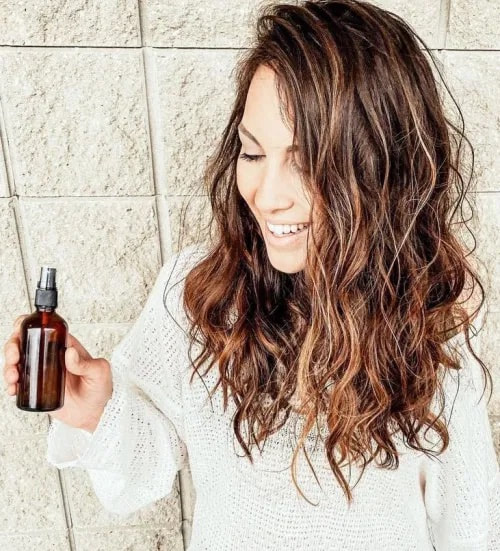
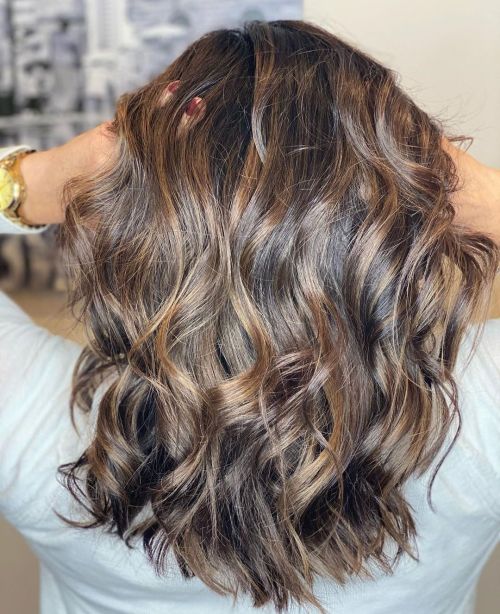
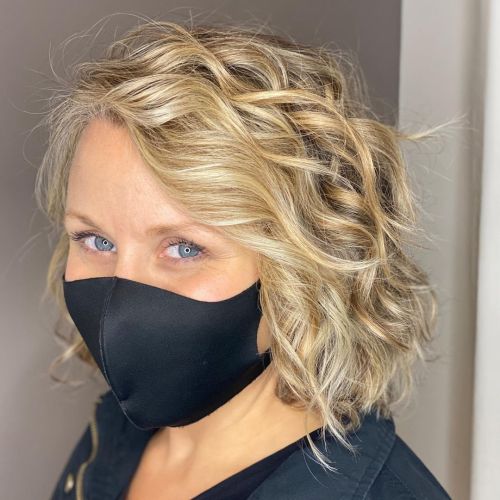
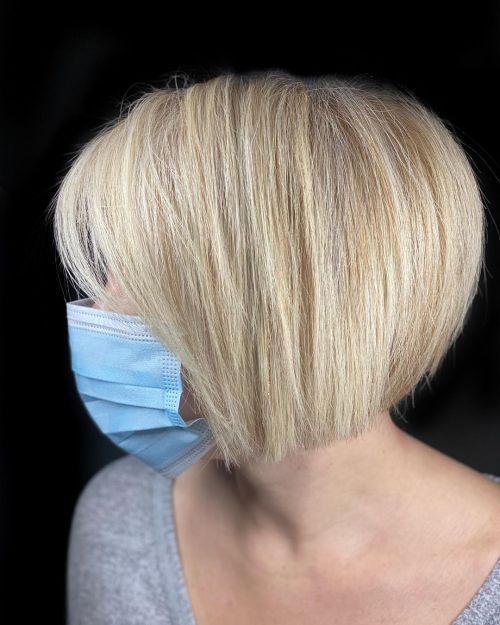






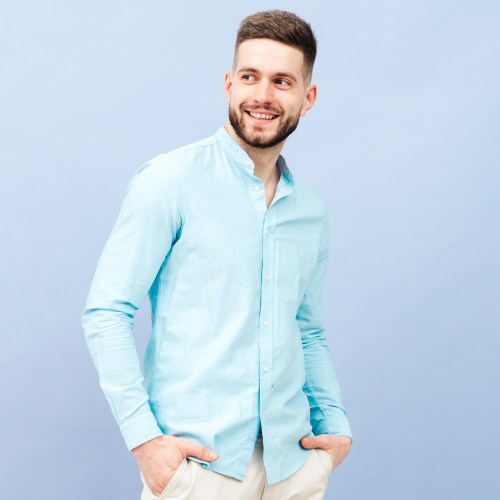


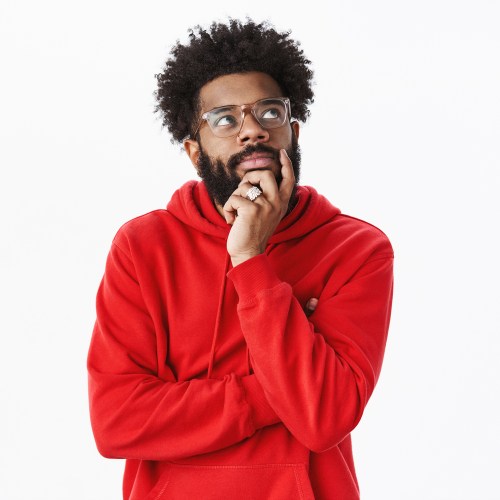
 RSS Feed
RSS Feed